
ISME Communications
Scope & Guideline
Exploring the Intersections of Microbiology and Ecology
Introduction
Aims and Scopes
- Microbial Ecology and Diversity:
The journal focuses on the diversity of microbial species across various ecosystems, exploring how different environmental factors influence microbial community structures and functions. - Metagenomics and Genomic Insights:
Significant attention is given to metagenomic studies that reveal the genetic potential of microbial communities, enhancing the understanding of their ecological roles and interactions. - Microbial Interactions and Symbiosis:
Research on the interactions between microbes, including symbiotic relationships and competition, provides insights into community dynamics and ecosystem functioning. - Biogeochemical Cycles and Environmental Impact:
The journal emphasizes studies linking microbial processes to biogeochemical cycles, highlighting the role of microbes in nutrient cycling, carbon fixation, and ecosystem health. - Novel Methodologies in Microbial Research:
ISME Communications promotes innovative research methodologies, including machine learning, single-cell genomics, and advanced sequencing techniques to dissect complex microbial communities.
Trending and Emerging
- Microbiome Interactions with Climate Change:
Research exploring how microbial communities respond to climate change, including shifts in community composition and function, is gaining traction as the implications for ecosystem health and resilience become clearer. - Multi-Omics Approaches:
The integration of genomics, transcriptomics, proteomics, and metabolomics is on the rise, allowing for a more holistic understanding of microbial community dynamics and their functional capacities. - Microbial Roles in Sustainable Agriculture:
There is an increasing focus on the role of microbial communities in promoting sustainable agricultural practices, including soil health, plant growth promotion, and bioremediation. - Microbial Contributions to Human Health:
Research linking microbial communities to human health outcomes, particularly in the context of gut microbiomes and their influence on diseases, is emerging as a significant area of interest. - Machine Learning in Microbial Ecology:
The application of machine learning techniques to analyze complex microbial datasets is trending, enhancing the capability to predict microbial interactions and community dynamics.
Declining or Waning
- Traditional Culture Techniques:
Research utilizing traditional microbial culturing methods has decreased, as there is a growing preference for molecular techniques that provide a more comprehensive view of microbial diversity. - Microbial Pathogen Studies:
Although important, publications focusing solely on pathogenic microbes have waned in favor of broader ecological studies that incorporate the roles of beneficial and neutral microbes in ecosystems. - Single-Species Studies:
There is a noticeable decline in studies concentrating on single microbial species, as the field increasingly recognizes the importance of community-level interactions and multi-species dynamics. - Static Environmental Assessments:
Research that focuses exclusively on static assessments of microbial communities without considering temporal dynamics or environmental changes is becoming less common.
Similar Journals
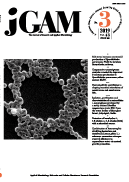
JOURNAL OF GENERAL AND APPLIED MICROBIOLOGY
Advancing microbial insights for a healthier tomorrow.JOURNAL OF GENERAL AND APPLIED MICROBIOLOGY, published by the MICROBIOL RES FOUNDATION, is a vital resource in the fields of applied microbiology and biotechnology, as well as in diverse medical applications, serving an academic community dedicated to advancing microbial science. Established in 1955, this journal has a rich history of disseminating innovative research and insights into the intricate world of microorganisms. With an ISSN of 0022-1260 and an E-ISSN of 1349-8037, the journal maintains high scholarly standards and robustness, reflected in its 2023 Scopus rankings placing it in the Q3 and Q4 quartiles within its categories. While primarily based in Japan, the journal engages a global audience, offering valuable contributions that inform both theoretical perspectives and practical applications in microbiology. Despite being a non-open-access publication, it provides pivotal research findings essential for academics, professionals, and students alike, fostering a deeper understanding of microbial impact on health and the environment.
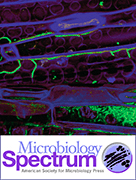
Microbiology Spectrum
Connecting researchers to the spectrum of microbial knowledge.Microbiology Spectrum is a prominent peer-reviewed journal published by the American Society for Microbiology, dedicated to advancing the field of microbiology through the dissemination of high-quality research. Since its inception in 2013 and continuing until 2024, the journal has established a strong presence in key domains such as microbiology, immunology, cell biology, and ecology, achieving impressive quartile rankings including Q1 in Infectious Diseases and Q1 in Immunology and Microbiology as of 2023. With an emphasis on open access to its scholarly content, Microbiology Spectrum aims to foster collaboration and knowledge sharing among researchers, professionals, and students alike. The journal's scope encompasses a diverse range of topics pertinent to the field, making it an essential resource for anyone involved in microbiological research and its applications. Researchers looking to publish their findings in a respected journal will find Microbiology Spectrum's robust impact factor and Scopus rankings serve as testament to its significance and influence within the academic community.

MICROBIAL ECOLOGY
Charting the complex relationships within microbial communities.MICROBIAL ECOLOGY, published by Springer, is a premier journal dedicated to advancing the field of microbial ecology, illuminating the intricate relationships between microorganisms and their environments. Established in 1974, the journal reflects a strong historical commitment to disseminating high-quality research, with its current scope encompassing groundbreaking studies that explore microbial dynamics in various ecosystems. In the 2023 rankings, it has secured a prestigious position in Q1 across multiple categories, including Ecology, Evolution, Behavior and Systematics, and Soil Science, indicating its influential contribution to scientific literature. While it does not offer Open Access, the journal remains highly accessible to researchers and professionals via institutional subscriptions. With an impressive Scopus ranking across significant ecological categories, it serves as an essential resource for academics looking to deepen their understanding of microbial interactions and ecological processes, thereby facilitating innovative research and practical applications in environmental science.
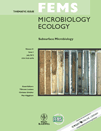
FEMS MICROBIOLOGY ECOLOGY
Advancing Knowledge in Microbial Ecology and SustainabilityFEMS Microbiology Ecology is a prestigious journal published by Oxford University Press, specializing in the dynamic field of microbiology and its ecological implications. With an impressive impact factor and consistently ranked in the top quartiles (Q1) across multiple categories—including Applied Microbiology and Biotechnology, Ecology, and Microbiology—this journal serves as an essential resource for researchers and professionals aiming to advance their understanding of microbial interactions within ecosystems. Established in 1990 and spanning to 2024, FEMS Microbiology Ecology delivers cutting-edge research, reviews, and insightful discussions that illuminate the complex roles microorganisms play in environmental health and sustainability. Located in the United Kingdom, this journal provides a global platform for discourse, making significant contributions to both theoretical frameworks and practical applications in the biotech and environmental science sectors. Researchers and students alike will find a wealth of information that not only enriches their knowledge but also inspires innovative solutions for ecological challenges.
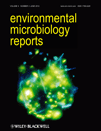
Environmental Microbiology Reports
Transforming Environmental Science through Microbial PerspectivesEnvironmental Microbiology Reports, published by WILEY, is a prestigious journal dedicated to the field of environmental microbiology, exploring the intricate interactions between microorganisms and their environments. With an ISSN of 1758-2229, this journal has established itself as a crucial resource for researchers, professionals, and students interested in the latest advancements and applications in microbial ecology, soil science, and environmental sustainability. Since its inception in 2009, the journal has grown in impact and reputation, proudly ranked in the Q1 category for both Agricultural and Biological Sciences and Ecology, Evolution, Behavior and Systematics as of 2023. Notably, it occupies the 17th position out of 193 in its subcategory based on Scopus rankings, showcasing its significance within the field. Although it does not currently offer open access options, the high-quality research published in this journal continues to contribute significantly to the understanding of microbial roles in environmental processes, emphasizing the vital role of microbes in maintaining ecosystem health and promoting sustainable practices.
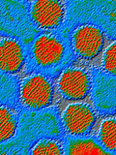
Annual Review of Microbiology
Elevating Microbiology: Where Research Meets InnovationAnnual Review of Microbiology is a preeminent academic journal published by Annual Reviews, specializing in the dynamic field of microbiology. With a rich history dating back to 1948, this journal has become a vital resource for researchers, professionals, and students alike, providing comprehensive reviews that synthesize the latest advancements and trends in microbiological research. The journal is renowned for its impressive reputation, holding a Q1 ranking in both Medicine (miscellaneous) and Microbiology, and achieving an outstanding Scopus rank of #12 out of 182 in the field, placing it in the 93rd percentile. Although it does not offer open access, the Annual Review of Microbiology remains integral to advancing knowledge and understanding of microbial science, helping to bridge the gap between fundamental research and practical applications in health, industry, and environmental sustainability. Its meticulously curated content serves as a crucial platform for fostering innovation and collaboration among the global research community.

GEOMICROBIOLOGY JOURNAL
Fostering Collaboration in Earth and Microbial SciencesGEOMICROBIOLOGY JOURNAL, published by Taylor & Francis Inc, is a premier academic journal dedicated to the interdisciplinary field of geomicrobiology. With its ISSN 0149-0451 and E-ISSN 1521-0529, this journal serves as a vital platform for researchers, professionals, and students to share and advance knowledge regarding the complex interactions between geological and microbiological processes. Established in 1978, the journal has evolved through various phases and continues to publish valuable research that spans crucial topics in Earth and Planetary Sciences, Environmental Chemistry, and Microbiology. As reflected in its Scopus rankings, GEOMICROBIOLOGY JOURNAL is recognized for its significance within its field, achieving a Q2 quartile in areas like Earth and Planetary Sciences and Environmental Science. Despite not being an Open Access journal, it offers access options through institutional subscriptions, ensuring that its impactful research is available to a broad academic audience. Overall, GEOMICROBIOLOGY JOURNAL remains an essential resource for those dedicated to exploring the intersection of microbial life and geological processes, fostering innovation and collaboration across disciplines.

MICROBIOLOGY
Cultivating Knowledge in Microbial Dynamics and ApplicationsMICROBIOLOGY (ISSN: 0026-2617, E-ISSN: 1608-3237), published by MAIK NAUKA/INTERPERIODICA/SPRINGER, is a pivotal journal in the field of microbiological research, operating from the vibrant hub of New York, United States. With a focus on the intricate relationships and functionalities of microorganisms, MICROBIOLOGY serves as an essential resource for professionals and researchers dedicated to advancing the knowledge of applied microbiology and biotechnology. As of 2023, it holds a competitive Q3 and Q4 category ranking in Applied Microbiology and Biotechnology and Microbiology, respectively, reflecting its commitment to high-quality and impactful research. Although currently not open access, the journal extends comprehensive insights into critical topics that span environmental microbiology, clinical applications, and biotechnology advancements, making it a vital platform for disseminating innovative findings in this ever-evolving discipline. Researchers and students alike will find MICROBIOLOGY to be an invaluable addition to their academic and professional repertoire.

MicrobiologyOpen
Advancing microbiological research for a global audience.MicrobiologyOpen is a prestigious, open access journal published by WILEY, dedicated to advancing the field of microbiology. Since its inception in 2012, this journal has firmly established itself as a significant platform for researchers, professionals, and students alike, facilitating the dissemination of high-quality research findings across a wide range of microbiological disciplines. With an impressive impact factor and a ranking in the 76th percentile of Scopus for immunology and microbiology, MicrobiologyOpen offers a robust forum for innovative studies, reviews, and compelling insights that push the boundaries of scientific understanding. The journal's commitment to open access ensures that groundbreaking research is freely available to the global community, fostering collaboration and knowledge-sharing. As it continues to evolve until 2024, MicrobiologyOpen remains pivotal for anyone looking to stay at the forefront of microbiological research.

INTERNATIONAL JOURNAL OF SYSTEMATIC AND EVOLUTIONARY MICROBIOLOGY
Advancing Knowledge in Systematics and EvolutionInternational Journal of Systematic and Evolutionary Microbiology, published by the Microbiology Society, stands at the forefront of microbiological research, focusing on the systematic and evolutionary aspects of microorganisms. With its ISSN 1466-5026 and e-ISSN 1466-5034, this prestigious journal not only boasts an impressive impact within its fields—ranked Q1 in both Ecology, Evolution, Behavior and Systematics and Medicine (Miscellaneous), and Q2 in Microbiology for 2023—but also consistently provides an open access platform for researchers to disseminate their findings. Established in 2000, the journal has established itself as an essential resource for professionals and students alike, offering insights into microbial diversity, systematics, and evolutionary pathways. By providing a rich repository of knowledge with a global reach from its UK base, IJSEM continues to enhance our understanding of the microbial world, fostering collaboration and innovation in microbiological science.